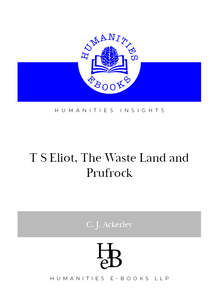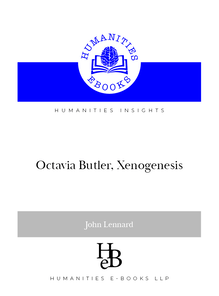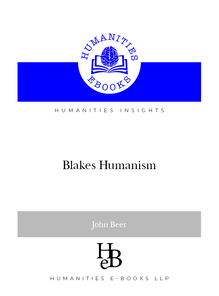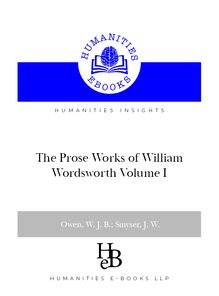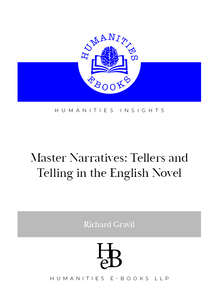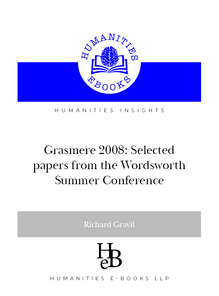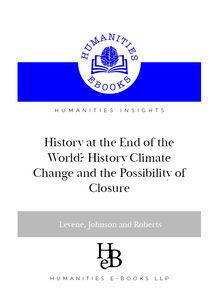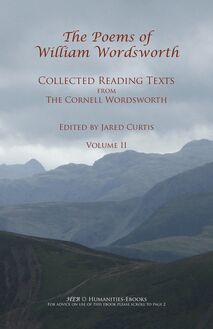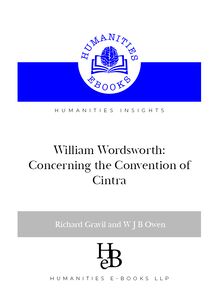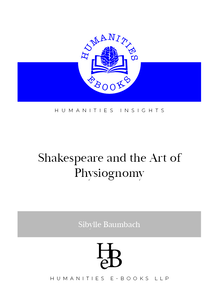-
 Univers
Univers
-
 Ebooks
Ebooks
-
 Livres audio
Livres audio
-
 Presse
Presse
-
 Podcasts
Podcasts
-
 BD
BD
-
 Documents
Documents
-
- Cours
- Révisions
- Ressources pédagogiques
- Sciences de l’éducation
- Manuels scolaires
- Langues
- Travaux de classe
- Annales de BEP
- Etudes supérieures
- Maternelle et primaire
- Fiches de lecture
- Orientation scolaire
- Méthodologie
- Corrigés de devoir
- Annales d’examens et concours
- Annales du bac
- Annales du brevet
- Rapports de stage
La lecture à portée de main
100 pages
English
Découvre YouScribe en t'inscrivant gratuitement
Je m'inscrisDécouvre YouScribe en t'inscrivant gratuitement
Je m'inscris
Obtenez un accès à la bibliothèque pour le consulter en ligne
En savoir plus
En savoir plus
100 pages
English
Obtenez un accès à la bibliothèque pour le consulter en ligne
En savoir plus
En savoir plus

Description
Octavia Butler's premature and sudden death in 2006 has been very widely lamented, unhappily confirming her influence as a vital African-American and female pioneer in Science Fiction.
Sujets
Informations
| Publié par | Humanities eBooks |
| Date de parution | 11 janvier 2021 |
| Nombre de lectures | 0 |
| EAN13 | 9781847600363 |
| Langue | English |
Informations légales : prix de location à la page 0,0250€. Cette information est donnée uniquement à titre indicatif conformément à la législation en vigueur.
Extrait
Humanities-Ebooks Genre Fiction Sightlines
RUNNING HEàd 1
Octavia E. Butler Xenogenesis / Lilith’s Brood
Dawn Adulthood Rites Imago
by John Lennard
PublicationData
tExT © JOhN lENNàrd, 2007
The Author has asserted his right to be identiIed as the author of this Work in accord-ance with the Copyright, Designs and Patents Act 1988. Copyright in quoted text or im-ages reproduced in this work remains with the acknowledged source. Every effort has been made to trace copyright holders. Owners of text or images not credited should contact the author who will be pleased to make the appropriate arrangements.
Published in 2007 byHumanities-Ebooks.co.uk Tirril Hall, Tirril, Penrith CA10 2JE
ReaDingoPtions
*Before continuing, please use the command ‘View > It to page’ and then progress by using the ‘next page’ arrows at the top or bottom right of the Viewer screen. *To navigate through the contents use the ‘Bookmarks’ at the left of the screen. *To search, click on the search symbol in the toolbar and select ‘show all results’. *For ease of reading, use <CTRL+L> to enlarge the page to full screen *Use <CTRL+L> to return to the full menu, with its bookmarks and search tool. *Hyperlinks (if any) appear in Blue Underlined Text. To return directly to the anchor page after visiting an internal hyperlink use the green back button.
licenceanDPeRmissions
Purchasing this book licenses you to read this work on-screen and to print one copy for your own use. Copy and paste functions are disabled. No part of this publication may be otherwise reproduced or transmitted or distributed without the prior written permission of both the copyright owner and the publisher. Making or distributing copies of this book constitutes copyright infringement and would be liable to prosecution. Thank you for re-specting the rights of the author.
isbn 978-1-84760-036-3
Octavia E. Butler:Xenogenesis/Lilith’s Brood
John Lennard Tirril: Humanities-Ebooks 2007
A Note on the Author
John Lennard took his B.A. and D.Phil. at Oxford University, and his M.A. at Washington University in St Louis. He has taught in the Universities of London, Cambridge, and Notre Dame, and for the Open University, and is now Professor of British & American Literature at the University of the West Indies—Mona. His publications includeBut I Digress: The Exploi-tation of Parentheses in English Printed Verse(Clarendon Press, 1991), The Poetry Handbook(1996; 2/e, OUP, 2005), with Mary LuckhurstThe Drama Handbook(OUP, 2002), and the Literature InsightsHamlet(2007). He is the general editor of theGenre Fiction SightlinesandMonographsseries, and has writtenSightlineson works by Reginald Hill, Walter Mos-ley, Tamora Pierce and Ian McDonald. His critical collectionOf Modern Dragons and other essays on Genre Fiction(2007), published simultane-ously with this e-book, launches the Monographs Series.
The author wishes especially to thank Roger Luckhurst, an outstand-ing reader and critic of Science Fiction, for introducing him (many years ago) toXenogenesisand the other remarkable worlds of Octavia Butler. Marvellous.
Contents
1. Notes 1.1 Octavia E. Butler 1.2 TheXenogenesisTrilogy 1.2.1 Name and Background 1.2.2 Structure 1.3 (Black) Science Fiction and Race 1.3.1 The Colour of Aliens 1.3.2 The Colour of Writers and Readers 1.4 (Black) Science Fiction and Gender 1.5 Science Fiction and Dystopias 1.6 DNA and Human Genetics 2. Annotations 2.1Dawn(1987) 2.1.1 Book One: Womb 2.1.2 Book Two: Family 2.1.3 Book Three: Nursery 2.1.4 Book Four: The Training Floor 2.2Adulthood Rites(1988) 2.2.1 Book One: Lo 2.2.2 Book Two: Phoenix 2.2.3 Book Three: Chkahichdahk 2.2.4 Book Four: Home 2.3Imago(1989) 2.3.1 Book One: Metamorphosis 2.3.2 Book Two: Exile 2.3.3 Book Three: Imago 3. Essay: The Strange Determination of Octavia Butler
4. Bibliography
1. Notes
1.1 Octavia E. Butler
7
Octavia Estelle Butler was born in Pasadena, California, on 22 June 1947, only child of Laurice & Octavia Butler. Her father, a shoe-shiner, died while she was a baby, and she was raised by her mother and maternal grandmother, who worked as a maid. Butler grew up strictly Baptist in a poor, mixed-race neighbourhood. Shy, later diagnosed as dyslexic, and isolated by height in every age-group (as an adult she was over six feet), she began writing at age 10 to escape what she called “loneliness and boredom”. At 12 she saw a schlock B-movie, Devil Girl from Mars (1954), thought she could do better, and began a lifelong interest in reading, watching, & writing SF. Butler graduated from Pasadena City College in 1968, and took courses at California State University in Los Angeles and via UCLA extension programmes 1968–70. Her major influences, however, came from a spectacular public obsession and two workshops. The obsession was the ‘Space Race’, culminating in the intense excitement of Apollo 11’s first manned moon-landing in July 1969, followed by Apollo 12 (Nov. 1969). After the aborted Apollo 13 mission (April 1970), there were successful landings by Apollos 14–17 (Feb. 1971–Nov. 1972). The first workshop, in 1969–70, was the Screenwriters’ Guild of America, West, Open Door Program, designed to mentor poor Black and Latino writers, where Butler met established SF writer Harlan Ellison (b. 1934). The second, in 1970, was the newly-founded Clarion SF Writers’ Workshop at Michigan State University, where she met Samuel R. Delaney (b. 1942)—the first recognised African-American SF writer, and an acknowledged star of the later 1960s. Butler’s first publication, ‘Crossover’, appeared in the 1971 Clarion anthology. Ellison bought another story for an anthology that never appeared, but she found it hard to establish herself, partly because overtly racial and gendered concerns in her writing went against perceived SF norms, and her own gender and race made her unusual as an SF writer. Her first novel,Patternmaster, completed by 1974, appeared in 1976, followed by four further novels in the same series:Mind of My Mind(1977),Survivor(1978),Wild Seed(1980), &Clay’s Ark(1984). The novel that made her name, especially among African-Americans, interrupted
8
this series.Kindred(1979) has sold more than 250,000 copies but is often rejected as SF; Butler herself called it a “grim fantasy”. A modern African-American Californian time-travels to an ante-Bellum South where she meets her ancestors, a Black slave-woman who was born free and her White owner. Though often shelved and taught as ‘African-American Literature’ without reference to SF, time-travel is outside the ‘mainstream’ realist tradition, and Butler’s SF identity began to be celebrated in 1984, with a Hugo Award for Best Short Story (‘Speech Sounds’), and the 1984 Nebula/1985 Hugo Awards for Best Novelette (‘Bloodchild’). Her next work was theXenogenesistrilogy—Dawn(1987),Adulthood Rites(1988), &Imago(1989)—followed by the Parable series:Parable of the Sower(1993), nominated for Best Novel Nebula, andParable of the Talents(1998), which won the 1999 Nebula. A remarkable, harrowing collection,Bloodchild and otherstories, appeared in 1995 (enlarged ed. 2006), but though planningParable of the TricksterButler suffered for nearly a decade from acute writer’s block. This was perhaps connected to the easing of lifelong poverty by a $295,000 MacArthur Foundation Award (the ‘Genius Program’) in 1995, which enabled her to buy a house. Medication for high blood-pressure made her drowsy and depressed, and after the death of her mother in 1998 she moved to Seattle. A reclusive non-driver, Butler became an important participant in Clarion Workshops, encouraging other Black SF writers including Steven Barnes (b. 1952), Tananarive Due (b. 1966), and Nalo Hopkinson (b. 1960). Writer’s block eased in 2004, and she completed her last novel,Fledglingradically reimagining with racial and (2005), gendered consciousness the vampire tales that are presently so popular. Octavia Butler died on 24th February, 2006, outside her Seattle house, either from a stroke or from falling and striking her head on a cobbled walkway. Her premature loss is widely lamented, and the Carl Brandon Society, an SF organisation concerned with writing by and representations of “people of color”, has established an annual Memorial Scholarship in her name to enable a young writer “of color” to attend one of the Clarion Workshops where Butler got her own start.
1.2 TheXenogenesisTrilogy
1.2.1 Name and Background
The novels of the trilogy appeared individually—Dawnin 1987,Adulthood Ritesin 1988, andImago1989. From 1989–2000 they were boxed as in Xenogenesis, a
9
coinage from Greekxenos, ‘a stranger’ (cf. xenophobia) +genesis, ‘beginning’, to mean ‘the initial evolution of an alien race’. The prefixxeno-is used in SF in terms likexenobiology, study of alien life, orxenology, study of alien cultures, so while unfamiliar the term was intriguing rather than off-putting to SF readers. In 2000 the umbrella-title was changed toLilith’s Broodfor the omnibus edition, religious rather than scientific, and the trilogy remains available under that name and as individual volumes. The significance of the change is considered in the Essay. The world in the mid-1980s was very different from the world in which we now live. Global politics was dominated by the Cold-War standoff between USA & USSR (Soviet Russia) mediated through ‘Mutually Assured Destruction’ (MAD)— the certainty that no ‘first strike’ nuclear attack could avoid reciprocal destruction. Imagination of a post-nuclear-holocaust world was a major theme in SF and Western culture at large from the later 1940s, disseminating ideas of ‘nuclear winter’ and mutation. If threats of nuclear catastrophe have receded, there is a close equivalent in fears of eco-catastrophe through runaway Global Warming, pollution, and destruction of the environment (all of which feature in Butler’sParableseries). The double-helix structure of human DNA had been discovered by Crick & Watson in the 1950s (see Note 1.6), but ‘genetic engineering’ was still in its infancy, little known to the public. Home computers had taken off as a market-sector in the later 1970s, and developed mightily in the 1980s, but the Web was before 1991 a limited construct to which only a handful of scientists had access. AIDS was beginning to be recognised as a global threat, and was still a death sentence even for the rich who could afford palliative care. Cancers were also far less treatable, though genetic bases of predisposition to cancer were beginning to be understood. Feminist and racial awareness (see Notes 1.3–4) were dominant cultural themes, but while Civil Rights and Affirmative Action in the USA secured some changes, sexism and bigotry in the workplace were even worse than they remain today. Awareness of how grim the situation remained was slowly disseminating among men and majority populations. The racial and sexual themes ofXenogenesis were therefore somewhat more surprising and radical in the late 1980s than they may on first reading now seem, especially to younger readers.
1.2.2 Structure
The aliens Butler created to rescue human survivors of nuclear holocaust, the Oankali, have three sexes—male, female, and the neuter, gene-manipulatingooloi—
10
and her trilogy is structured to match.Dawnwith Lilith Iyapo, an African- deals Americanwomanchooses (in so far as she has any choice) to accept what who Oankali offer.Adulthood Rites deals with her son Akin, the firstmale Human-Oankali ‘construct’ (or miscegenate offspring).Imagowith another child, deals Jodahs, the firstooloi‘construct’. Each novel is divided into books whose titles provide an additional map: DawnWombFamilyNurseryThe Training Floor Adulthood RitesLoPhoenixChkahichdahkHome ImagoMetamorphosisExileImago The books ofDawn follow Lilith’s rebirth in partnership with Oankali. Those of Adulthood Rites name places (for the Oankali living things) that contrast human names and ideas (Phoenix, Home) with Oankali ones (Lo, Chkahichdahk). The first and third books ofImagoinvoke insect development: an imago (plural ‘imagos’ or ‘imagines’ [im-á-gin-és]) is an adult insect after metamorphosis (for example, a butterfly that has already been a caterpillar and a pupa). The second book posits ‘Exile’ in contrasts to ‘Home’. The trilogy as a whole drives from foetal development to post-metamorphic adulthood, and from that which is wholly human to the greatest possible state of human-alien miscegenation (Latinmiscēre, ‘to mix’ +genus, ‘race’): the genesis of a post-Human race,Homo oankali, fromH. sapiens.
1.3 (Black) SF and Race
1.3.1 The Colour of Aliens
Arguably, at least,all SF that encounters alien life is in some measure concerned with human race relations. By mapping intra-human relations onto inter-species relations in an SF narrative, both typically fearful human reactions to whatever is different and general or individual assumptions about our own and others’ rights are interrogatively foregrounded. At the same time, vulnerability of space-ships and astronauts (or exploring parties) in hostile environments, or some terrible threat from aliens to all humankind, provide a necessity for human unity that for most readers transcends (in the name of survival) whatever racial, cultural, sexual, and religious
-
 Univers
Univers
-
 Ebooks
Ebooks
-
 Livres audio
Livres audio
-
 Presse
Presse
-
 Podcasts
Podcasts
-
 BD
BD
-
 Documents
Documents
-
Jeunesse
-
Littérature
-
Ressources professionnelles
-
Santé et bien-être
-
Savoirs
-
Education
-
Loisirs et hobbies
-
Art, musique et cinéma
-
Actualité et débat de société
-
Jeunesse
-
Littérature
-
Ressources professionnelles
-
Santé et bien-être
-
Savoirs
-
Education
-
Loisirs et hobbies
-
Art, musique et cinéma
-
Actualité et débat de société
-
Actualités
-
Lifestyle
-
Presse jeunesse
-
Presse professionnelle
-
Pratique
-
Presse sportive
-
Presse internationale
-
Culture & Médias
-
Action et Aventures
-
Science-fiction et Fantasy
-
Société
-
Jeunesse
-
Littérature
-
Ressources professionnelles
-
Santé et bien-être
-
Savoirs
-
Education
-
Loisirs et hobbies
-
Art, musique et cinéma
-
Actualité et débat de société
- Cours
- Révisions
- Ressources pédagogiques
- Sciences de l’éducation
- Manuels scolaires
- Langues
- Travaux de classe
- Annales de BEP
- Etudes supérieures
- Maternelle et primaire
- Fiches de lecture
- Orientation scolaire
- Méthodologie
- Corrigés de devoir
- Annales d’examens et concours
- Annales du bac
- Annales du brevet
- Rapports de stage
Signaler un problème
YouScribe
Le catalogue
Le service
© 2010-2024 YouScribe
